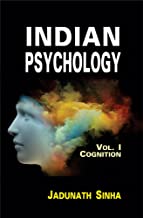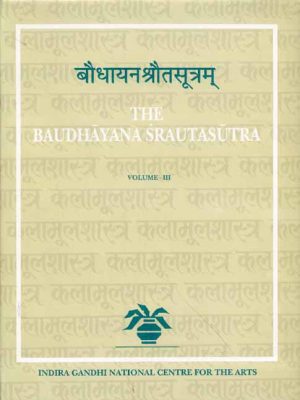-
-
Tulasidasa’s Sri Ramacaritamanasa: The Holy Lake of the Acts of Rama (A Romanized Edition)
Tulasidasa’s Sri Ramacaritamanasa: The Holy Lake of the Acts of Rama (A Romanized Edition)
The SHRI RAMACHARITAMANASA by Tulasidasa is the single most popular book among Hindus. This book has a huge appeal to the affluent and the poor, the learned and the uneducated, the elderly and the young, and the scholar and the ordinary man. It has done so for over four centuries. This one-of-a-kind version of the Ramacharitamanasa, which also includes the original text written by Tulasidasa as well as verse-by-verse translations into Hindi and English, was created with the goal of satisfying the growing interest that people have in epic literature. The translation that was done by a skilled academic does the original work justice in terms of its inherent depth and complexity. It has been crafted with the intention of being of help to Indian brothers and sisters who now reside outside of India and for whom Tulasidasa’s original may have been written in a dialect that was difficult to understand. A regular and genuine copy of the Ramacharitamanasa has been in high demand among the enormous Indian population that has relocated outside of India for a significant amount of time. This particular version is distinguished by the incorporation of Lavakushakanda, Shri Hanumanchalisa, and Shri Ramashalaka Prashnavali as one of its key features. Special care has been taken for making it useful to the Indian brethren living abroad to whom the dialect of Tulsidasa’s original may be somewhat incomprehensible. There has been a long-standing demand from the vast Indian community settled abroad for a standard and authentic edition of the Ramacharitamanasa
This version is based on our very first publication of Shriramacharitamanasa, which came out in 1988 and received widespread praise.
The current edition, which has been produced to fulfil their need by using the most up-to-date printing and processing processes, has been created to conform to the worldwide standard for works of literature.
The manner in which it is to be recited is detailed in an appendix that is presented on its own. The fact that book has key sections written by Indian, European, and American experts is another factor that contributes to its one-of-a-kind character.
comments on Tulasidasa’s Ramacharitamanasa. At the very end, you will find a dictionary that defines significant epithets and proper nouns.
Author
DR. R. C. PRASAD
₹3,000.00 -
The Wisdom of Vasistha: A Study on Laghu Yoga Vasistha from a Seeker’s point of view
The Wisdom of Vasistha: A Study on Laghu Yoga Vasistha from a Seeker’s point of view
Yogavasistha or Yogavasistha Maharamayana has been a guide book to earnest Sadhakas, all over the country. The popularity of this book appears to be due to the fact, that it is a happy combination of terse Upanisadic thought clothed in the story form. The Wisdom of Vasistha: A Study on Laghu Yoga Vasistha from a Seeker’s point of view A scripture becomes relevant, when it gives the truths of the Upanisads, using a common man’s language with illustrative stories, helps a beginner as well as an advanced seeker. It is believed by some that Sage Valmiki wrote the Ramayana for the purification of mind and to create a mood of seeking in the society. It is well known, that the story of Sri Rama, gives an exemplary ethical and moral behaviour in an individual, and a glimpse into the ideal culture, through the description of Ayodhya. For only on a strong ethical and moral foundation can one hope to build the super-structure of spirituality. Attempt has been made to cover all the stories in six Prakaranas. This book is a study by a seeker, and an attempt to present the philosophy, and practical hints contained in the book, to fellow seekers who are not very familiar with Sanskrit. It is essentially meant for inspiring the seekers to take up the study of the original text, which is a mine of practical wisdom. The essays contained herein, are glimpses into the meditations on the golden verses and their connection and relevance in our day-to-day life. Consequently, the interpretation and the perspective is not really meant for scholastic pursuits.
Author
Raghunandan
₹3,000.00 -
Pingal Devayan (Vol. 4): Vishnu Kalpa (Vol. 1)
Pingal Devayan (Vol. 4): Vishnu Kalpa (Vol. 1)
The Milinda Panha is a notable piece of Buddhist literature that was most likely produced in the first century before the common era. There is solid explanation for this. It offers Buddhist philosophy in a style that is exceedingly appealing and easy to remember in the form of a conversation between a Bactrian Greek monarch named Milinda, who plays the role of the “Devil’s Advocate,” and a Buddhist teacher named Nagasena. The majority of the issues that are often posed by Westerners are addressed, such as “If there is no soul, what is it that is reborn?” and “If there is no soul, who is talking to you now?” The themes that are discussed encompass most of these concerns. This masterwork of Buddhist literature is presented in a manner more suitable for modern readers thanks to this abridgement. The introduction provides a summary of the historical context in which the discussions took place, highlighting the collision of two significant cultures: that of ancient Greece, on the one hand, and the Buddhism of the Indus valley, which was a legacy left by the great Emperor Asoka, on the other. It is intended that the readers would be encouraged to read more from the translations of the Pali texts by the inclusion of suitable references, a glossary, an index, and a list of Pali quotes.
Author
Dr. Hazari
₹3,000.00 -
₹3,045.00
A History of Indian Philosophy (5 Vols.)
₹3,045.00 -
Kalhana’s Rajatarangini (3 Vols.): A Chronicle of the Kings of Kashmir
Kalhana’s Rajatarangini is the oldest and fullest record of Kashmir history. Sir Stein, recognising the inestimable value of the only work of its kind, succeeded in publishing the critical edition of the text as early as in 1892 which has been printed here as Vol. III of this three-volume set. Later he followed this illustrious venture by presenting a fully annotated translation of the Chronicle, in two volumes, printed as Vol. I and Vol. II here, the former containing the translation of the first seven tarangas of the original Sanskrit and the latter that of the remaining eighth tarangas.
₹3,195.00 -
Crochet Blankets Handmade
Crochet Blankets Handmade
Handmade crochet woolen blanket, multicolour or customizable in any colour₹3,499.00₹3,600.00Crochet Blankets Handmade
₹3,499.00₹3,600.00 -
-
-
The Hindu Temple (2 Vols.)
The Hindu Temple (2 Vols.)
The Hindu Temple is the sum total of architectural rites performed on the basis of its myth. The myth covers the ground and is the plan on which the structure is raised. It explains in detail the religious and spiritual significance of the temple b4y means of copious references to Sanskrit texts„both sacred and scientific. It depicts the Hindu Temple as not merely a heap of brick, stone or wood but a visible symbol of aspirations of pious men and women, the throbbings of their hearts in religious fervor and their endeavor for the attainment of salvation. The first four parts of this volume are devoted to the philosophy of temple architecture. Part V deals with the origin and development of the temple from the Vedic fire altars to the latest forms. Part VI discusses the pyramidal and curvilinear superstructures in the main varieties of the _ikhara, the
_ikhara enmeshed in Gavaksas and the composite _ikhara. Part VII described the proportional measurements and the rhythmic disposition of the garbha-grha and the vertical section. It discusses the proportions of the Mandapa and the types of temples described in the ancient sanskrit texts like the Brhatasmhita and the Samarnganasutradhara.
This most comprehensive and authoritative treatise of ancient Indian Temple Architecture will prove of immense help to the students of ancient Indian culture.
This two-volume work explains in detail the religious and spiritual significance of the temple by means of copious references to Sanskrit texts–both sacred and scientific. It depicts the Hindu Temple as not merely a heap of brick, stone or wood but a visible symbol of aspirations of pious men and women, the throbbings of their hearts in religious fervor and their endeavor for the attainment of salvation.
The first four parts of the work are devoted to the philosophy of temple architecture. Part V deals with the origin and development of the temple from the Vedic fire altars to the latest forms. Part VI discusses the pyramidal and curvilinear superstructures in the main varieties of the Sikhara, the Sikhara enmeshed in Gavaksas and the composite Sikhara. Part VII describes the proportional measurements and the rhythmic disposition of the garbha-grha and the vertical section. It discusses the proportions of the Mandapa and the types of temples described in ancient Sanskrit texts like the Brhatsamhita and the Samaranganasutradhara.
This most comprehensive and authoritative treatise of ancient Indian Temple Architecture will prove of immense help to the students of ancient Indian culture.
Contents (Vol. 1)
PART I: The Site, Part II: The Plan, Part III: Plan and Supernal Man, Part IV: The Substances of which the temple is built, Names and Origins of the Temple, Part VI. The Superstructure, Part VII: Proportionate Measurement and Varieties of the Temple (Volume 2) Part VIII: The Images of the Temple, Explanation of Plates, Appendix, Sources, Index, Plates I-IXXX.
₹4,000.00The Hindu Temple (2 Vols.)
₹4,000.00 -
-
Complete Subbu Combo @ 4499/-
Complete Set of 20 books at just 4499/-
₹4,499.00Complete Subbu Combo @ 4499/-
₹4,499.00 -
The Art of Ancient India: Buddhist, Hindu, Jain
The Art of Ancient India: Buddhist, Hindu, Jain
To scholars in the field, the need for an up-to-date overview of the art of South Asia has been apparent for decades. Although many regional and dynastic genres of Indic art are fairly well understood, the broad, overall representation of Indiaês centuries of splendor has been lacking. The Art of Ancient India is the result of the authorês aim to provide such a synthesis. Noted expert Sherman E. Lee has commented: –Not since Coomaraswamyês History of Indian and Indonesian Art (1927) has there been a survey of such completeness.” Indeed, this work restudies and reevaluates every frontier of ancient Indic art _ from its prehistoric roots up to the period of Muslim rule, from the Himalayan north to the tropical south, and from the earliest extant writing through the most modern scholarship on the subject.
This dynamic survey-generously complemented with 775 illustrations, including 48 in full color and numerous architectural ground plans, and detailed maps and fine drawings, and further enhanced by its guide to Sanskrit, copious notes, extensive bibliography, and glossary of South Asian art terms-is the most comprehensive and most fully illustrated study of South Asian art available.
The works and monuments included in this volume have been selected not only for their artistic merit but also in order to both provide general coverage and include transitional works that furnish the key to an all encompassing view of the art.
An outstanding portrayal of ancient Indiaês highest intellectual and technical achievements, this volume is written for many audiences: scholars, for whom it provides an up-to-date background against which to examine their own areas of study; teachers and students of college level, for whom it supplies a complete summary of and a resource for their own deeper investigations into Indic art; and curious readers, for whom it gives a broad-based introduction to this fascinating area of world art.
₹4,500.00



















